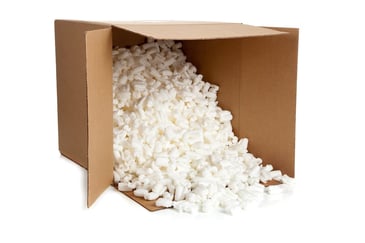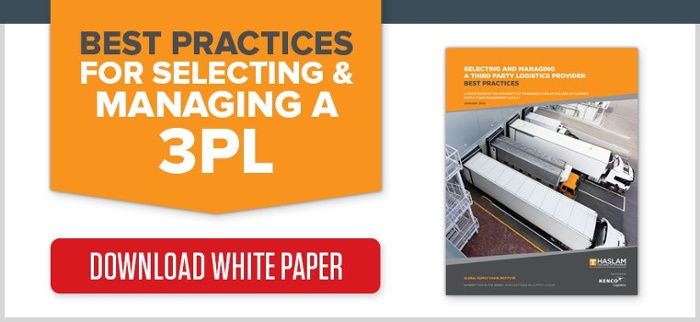
It's easy enough to shrug off: what could a little extra cardboard, some packing peanuts or excess shrink wrap really cost? A few cents? The truth is that excess packaging, as with most wasteful spending of any scale on the supply chain, has a significant ripple effect that you're already feeling in your budget, whether you realize it or not.
Beyond the actual, physical cost of materials, which multiplies ad infinitum as your shipments do, there's more to consider. Excess packaging bundles the cost of obtaining the materials, the cost of their repeated application, the cost to the environment, and the cost of waste disposal. These four hidden costs can vastly outweigh that theoretically affordable material cost, damaging your overall operational efficiency in the process.
How Does Packaging Inefficiency Happen?
No company ever goes into packaging design intending to burn capital. In some cases, it's a hasty initial design decision that's never revisited, and in others, it's a "boiled by degrees" situation over time. The root of the issue often begins, innocently enough, in a contract with good intentions. You want your products to arrive intact, your supply chain partner doesn't want to damage them, so you incentivize that scenario.
Unfortunately, without proper terms to protect against excessive material and freight cost, you're effectively shifting the cost of the problem rather than solving it.
If there are no penalties in place for excess packaging, it's only logical your partner would choose to–or stray over time towards–that route.
How Do I Look for Packaging Inefficiency?
Opportunities to operate lean rarely come bearing well-lit signs. The next time you have a shipment due in work materials, product components, even finished products, look for these red flags:
 Excessive space at the top of the trailer, crate, pallet, or an individual box. When individual components are over-packaged, the excess builds up and shows most visibly when a shipment is massed. Oversized individual containers mean fewer rows and columns for stacking, and that means added head space. If your products show up "in the wild" in only single or double rows, look carefully to see if bulk may be the culprit behind lean stacked storage.
Excessive space at the top of the trailer, crate, pallet, or an individual box. When individual components are over-packaged, the excess builds up and shows most visibly when a shipment is massed. Oversized individual containers mean fewer rows and columns for stacking, and that means added head space. If your products show up "in the wild" in only single or double rows, look carefully to see if bulk may be the culprit behind lean stacked storage.- Packaging that is either considerably larger than the item or outside industry norms. A lot of companies write off those added layers of pallet wrap or excess foam as "caution" on the part of their supply chain partners, but is it really? It's entirely possible these added materials look safe but do little in the way of actual protection—at least not enough to justify their cost. How does your packing material volume measure up to that used for your nearest competitor's item(s)? If it's a great deal more, something needs to change.
- Packing material that requires a great deal of work to extricate and dispose of. When your team needs to peel away, unravel, cut open, and cut away layers of packaging to get to the stock item, that accumulates a lot of trash. Multiply that trash by an entire pallet's worth of boxes, and you have a real mess on your hands. Not only is it time-consuming to extract the core item, but it also necessitates one of your staff gathering, carrying, and disposing of all that wasteful material.
- Packaging that defies standard warehouse moving equipment, such as cranes or forklifts. If items are too heavy, too wide, or too tall for standard equipment, their cost starts to climb like the meter in a waiting taxicab. Odd or heavy shaping means extra work, and that results in effort and employee power taken away from other important areas in your warehouse. Additionally, over-packaged goods can have the opposite effect on product safety, causing damage to the packaging and product in an attempt to overcompensate during movement.
- Complaints from consumer groups, end users, or even your own staff about wasted ecological resources. Wasteful packaging practices typically need to be egregious and prolonged to get to this level. If you hear complaints about the impact of your packaging on the environment, it's not a signal you should immediately upend your packaging practices, but it is a good time to take a critical look in their direction. For you, a case or box is just part of the shipment process—but to an eco-conscious consumer, it's a wasteful part of the overall product experience and could affect your brand’s reputation.
How Can I Tell If It's Really Excess?
An abundance of caution is never unwelcome when transporting and receiving shipments, but how does one tell the difference between excess and prudent padding? One of the best ways is to put it to a real-life test: send both the suspected overpacked item and the same item in pared-down packaging through your carrier of choice. Examine both and determine if the added layers helped or simply tread water alongside the leaner packaging option.
To Sum It Up
With so many variables in any given supply chain, this is the most reliable way to test your packaging to determine if you can afford to scale back. Chances are, you'll be pleasantly surprised at the results. After all, your supply chain partner may be concerned about breakage, but the hefty financial liability carried by some 3PLs is a much more reliable–pardon the pun–cushion against disaster. If you're looking for a logistics provider that will provide your company with as much careful protection as your packages, be sure to read our Selecting and Managing a 3PL eBook, which offers the tips and tricks you'll need to form a lasting, beneficial partnership.



